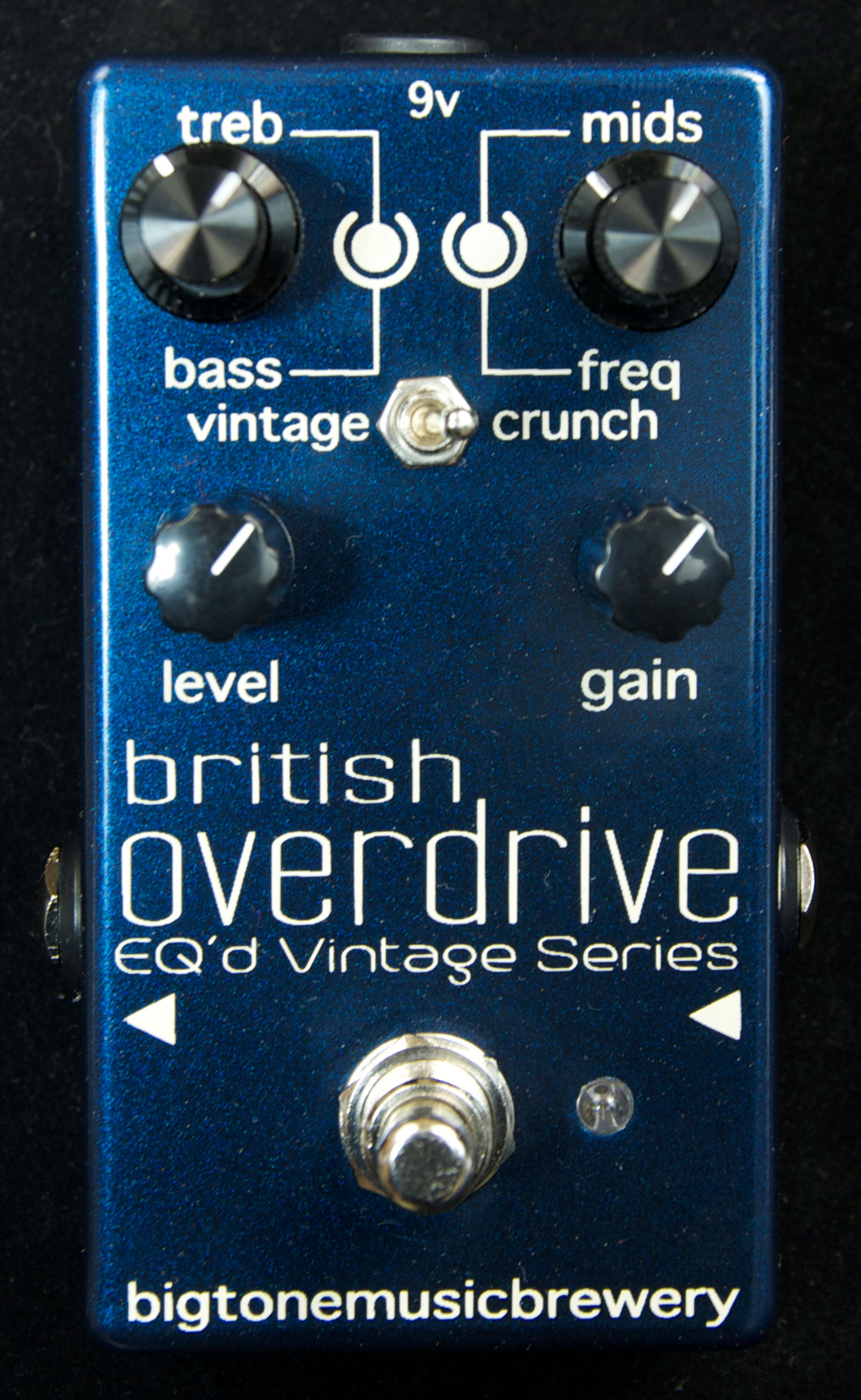 If you don’t yet know the Big Tone Music Brewery name, you probably know the people behind the company. It’s a sister of Build Your Own Clone (B.Y.O.C.), the little-stompbox-kit-company-that-could whose pedals often top best-alternative lists for everything from Big Muffs to Boss Vibratos.
If you don’t yet know the Big Tone Music Brewery name, you probably know the people behind the company. It’s a sister of Build Your Own Clone (B.Y.O.C.), the little-stompbox-kit-company-that-could whose pedals often top best-alternative lists for everything from Big Muffs to Boss Vibratos.
Given that history, it goes without saying that Big Tone Brewery is way more into substance and circuits than style. And their fixation with what makes a stompbox tick, buzz, rip, or roar led to the creation of the EQ’d Vintage Series pedals—a line of fuzzes, overdrives, and distortions that add parametric EQ functionality to classic dirt circuits. Though the line includes everything from Ram’s Head and Triangle Muffs, Fuzz Face clones, and DOD Overdrives, we checked out the British Overdrive, which effectively unites the relatively unsung Marshall Bluesbreaker and Guv’nor pedal circuits in a single, very impressive overdrive/distortion hybrid.
Brit Blues Built Just For You B.Y.O.C.’s deep, diverse, and probing knowledge about what makes a good circuit work is easy to see in the layout of the British Overdrive circuit. With two switchable clipping sections and the parametric EQ, it’s not exactly simple.
What’s beautiful, though, is the ease with which I could get a relatively similar sound out of each amp with the pedal’s EQ. But the through-hole wired board could not look tidier or more ordered. The EQ section has it’s own dedicated board, which is situated neatly at a right angle to the board that’s home to the drive section. Even with all that going on there is ample room for a 9V battery and a 9V DC jack.
The exterior of the enclosure is all biz and very little flash—the better to illustrate the functions of the smart, compact control set. The two lower knobs are for level and gain, while the toggle above switches between “vintage” (Bluesbreaker-style silicon clipping diodes) and “crunch” (Guv’nor style LED clipping diodes). What look like two knobs just above the switch is actually two concentric knob sets that make four. The left knobs control bass and treble. The right knobs are for midrange and isolate and fine-tune specific midrange frequencies. The footswitch is a pop-free soft-touch relay. It’s especially nice (and quiet) when you’re using the British Overdrive in high gain situations.
British, Brutish, and a Bit Urbane I came to know and love the textures of the Guv’nor via my very early Danelectro Daddy-O (which I often used to extract mid-‘60s Beatles-tones from my Fender piggybacks). That pedal hasn’t worked for years, so I was thrilled to plug in the British Overdrive and explore the LED diode-driven crunch mode. Though it took some time to get re-acquainted—especially with the enhanced EQ section (more about that in a minute)—it was thrilling to hear how the snappy, mid-rangey, bright, and ever-so-slightly-sizzling gain seamlessly nestled with the more contoured, tube-rectified, and slightly squishy output from my blackface Tremolux. Choppy chords managed to sound tough, brash, and harmonically sophisticated. Single note leads, meanwhile, bristled with a hot, organic, and sometimes explosive energy.
It should be noted that I didn’t arrive at this bliss immediately. Getting exactly the Vox-meets-Fender fusion I wanted to hear took some careful and attentive tweaking of the EQ. But while the EQ may be less than totally intuitive, what’s awesome is the way it can feel as powerful as a good piece of outboard gear. Those mid-’60s Beatles sounds I was seeking? They were created as much by Geoff Emerick’s tweaking of Abbey Road’s primitive but powerful compressors and preamps as they were by the sounds of Casinos, Bassmans, and Vox 7120s. The EQ on the British Overdrive gives you some of the very same power on the other side of the amp.
For my already bright Tremolux, I rolled back the bass just a touch to give the mids breathing room, added a little extra top end and a smidge of mids, then fine-tuned the midrange frequencies favoring the airier high-mid zones. A Vox AC10 required a pretty different EQ profile (with a lot less need for the spiky top end output from the pedal). A silverface Bassman with a fairly bassy 2x12 cabinet liked a little more nuanced high-mid setting and just a touch less bass. What’s beautiful, though, is the ease with which I could get a relatively similar sound out of each amp with the pedal’s EQ. It’s a truly powerful set of controls that can be tricky at first, but can deliver big sonic payoffs.
The vintage mode makes the British Overdrive a very different animal, and I wouldn’t be surprised if many players prefer this setting. The silicon clipping section makes the vintage mode not only quieter, but also just a bit more transparent. At fairly neutral EQ settings it was a great fit for the AC10, which has a strong, intrinsically mid-range personality that benefits from a subtle nudge in lead situations. A Fender Champ was another great match for the vintage mode, though it loved a little less bass and a hotter, airier midrange for leads. Vintage mode will also appeal to big Brit amp users who need just a subtle boost and the illusion of a little extra gain created by a high-mid bump.
The Verdict Bottom line: There isn’t much the British Overdrive doesn’t do well. It isn’t the most transparent overdrive, but it can be very subtle in spite of the color it lends. The EQ is often spectacularly effective—transforming the pedal from subdued to wildly aggressive to downright weird—particularly in the harder-clipping crunch mode. And while the EQ section isn’t altogether intuitive at first, a little practice makes it simple enough to use in variable backline situations, studio applications, or performance situations where you switch between guitars. For players that aren’t shy about tinkering, the British Overdrive is a bounty of cool and practical dirt tones.
